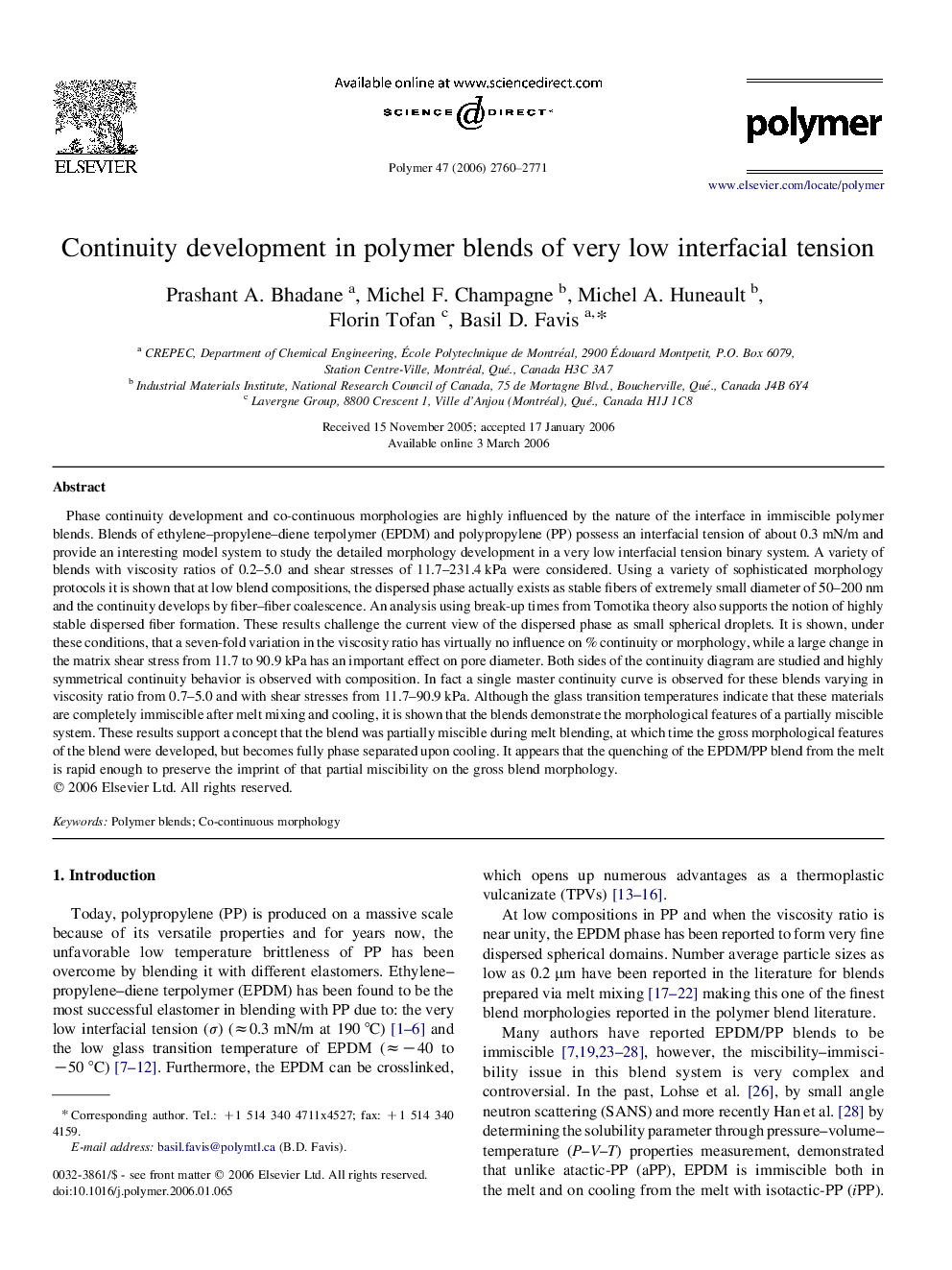| کد مقاله | کد نشریه | سال انتشار | مقاله انگلیسی | نسخه تمام متن |
|---|---|---|---|---|
| 5190817 | 1381218 | 2006 | 12 صفحه PDF | دانلود رایگان |
عنوان انگلیسی مقاله ISI
Continuity development in polymer blends of very low interfacial tension
دانلود مقاله + سفارش ترجمه
دانلود مقاله ISI انگلیسی
رایگان برای ایرانیان
موضوعات مرتبط
مهندسی و علوم پایه
شیمی
شیمی آلی
پیش نمایش صفحه اول مقاله

چکیده انگلیسی
Phase continuity development and co-continuous morphologies are highly influenced by the nature of the interface in immiscible polymer blends. Blends of ethylene-propylene-diene terpolymer (EPDM) and polypropylene (PP) possess an interfacial tension of about 0.3Â mN/m and provide an interesting model system to study the detailed morphology development in a very low interfacial tension binary system. A variety of blends with viscosity ratios of 0.2-5.0 and shear stresses of 11.7-231.4Â kPa were considered. Using a variety of sophisticated morphology protocols it is shown that at low blend compositions, the dispersed phase actually exists as stable fibers of extremely small diameter of 50-200Â nm and the continuity develops by fiber-fiber coalescence. An analysis using break-up times from Tomotika theory also supports the notion of highly stable dispersed fiber formation. These results challenge the current view of the dispersed phase as small spherical droplets. It is shown, under these conditions, that a seven-fold variation in the viscosity ratio has virtually no influence on % continuity or morphology, while a large change in the matrix shear stress from 11.7 to 90.9Â kPa has an important effect on pore diameter. Both sides of the continuity diagram are studied and highly symmetrical continuity behavior is observed with composition. In fact a single master continuity curve is observed for these blends varying in viscosity ratio from 0.7-5.0 and with shear stresses from 11.7-90.9Â kPa. Although the glass transition temperatures indicate that these materials are completely immiscible after melt mixing and cooling, it is shown that the blends demonstrate the morphological features of a partially miscible system. These results support a concept that the blend was partially miscible during melt blending, at which time the gross morphological features of the blend were developed, but becomes fully phase separated upon cooling. It appears that the quenching of the EPDM/PP blend from the melt is rapid enough to preserve the imprint of that partial miscibility on the gross blend morphology.
ناشر
Database: Elsevier - ScienceDirect (ساینس دایرکت)
Journal: Polymer - Volume 47, Issue 8, 5 April 2006, Pages 2760-2771
Journal: Polymer - Volume 47, Issue 8, 5 April 2006, Pages 2760-2771
نویسندگان
Prashant A. Bhadane, Michel F. Champagne, Michel A. Huneault, Florin Tofan, Basil D. Favis,